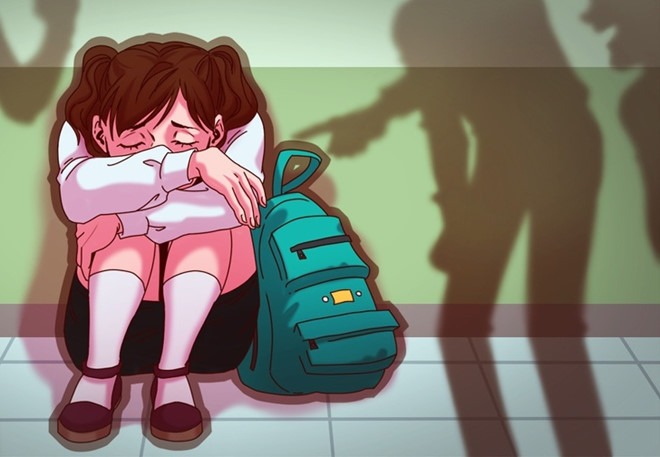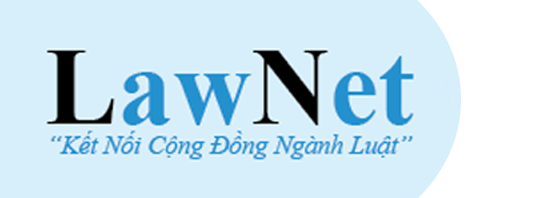What is school violence? What are the regulations on preventing and stopping school violence in Vietnam? - Ngoc Hanh (Ben Tre)

What is school violence? Regulations on preventing and stopping school violence in Vietnam (Internet image)
1. What is school violence?
According to Clause 5, Article 2 of Decree 80/2017/ND-CP, school violence includes torture, abuse and beating; physical abuse; verbal abuse, dignity and honor violations; isolation and other actions that damage the physical and mental health of students at the educational institutions or in the independent classes.
2. Regulations on preventing and stopping school violence in Vietnam
Regulations on preventing and stopping school violence in Vietnam is prescribed in Chapter III of Circular 38/2019/TT-BLDTBXH as follows:
2.1. Guidelines for propagating safe, healthy and friendly education environment which prevents and stops school violence in Vietnam
- Propaganda content:
+ The guidelines of the Party, policies and laws of the state, tradition and national pride
The contents of education on political thought, sense of law observance, education on a way of loving-kindness, tolerance, love and responsibility towards oneself, family, social community and the country. Individual and collective examples are well implemented in building a safe and healthy educational environment and preventing and combating school violence.
+ Reflecting thoughts and aspirations; affection; responsibility of students; students for a safe, healthy, friendly educational environment; prevention of school violence or human behavior in social relationships.
+ Knowledge and abilities in the following areas:
++ The dangers and consequences of school violence;
++ The duty to detect, inform, and condemn acts of school violence;
++ School violence prevention measures and skills;
++ Intervention skills when school violence occurs, to the best of their ability;
++ Abilities to prevent and prevent abuse against individuals, as well as abilities to protect themselves in social and network settings.
+ Critiquing deviant, negative, demanding, playful, enjoyable, or violent expressions, as well as gender inequality in vocational education institutions.
+ Contents to raise awareness for administrators, teachers, employees, and students about:
++ Sovereignty over the sea and islands, as well as territorial integrity;
++ Fighting for "peaceful evolution," opposing hostile forces' and political opportunistic elements' false information claims;
++ Not to be provoked or dragged to participate in activities that cause political instability and social instability.
- Forms of propaganda:
+ Through the mass media, the information system of the vocational education institution, and propagated on social networks.
+ Through regular class time, conferences, seminars, training, and extra-curricular activities.
+ Through thematic talks and seminars on culture and society.
+ Through cultural, artistic, and sports competitions or contests to learn about related fields.
2.2. Integrating political thought, morality, and lifestyle education
- Vocational education institutions organize and integrate the content of building a safe, healthy and friendly educational environment; preventing and combating school violence in educational activities of political thought, morality, and lifestyle at political activities at the beginning of the course; at the beginning of the school year; at the end of the school year; or other extracurricular educational activities.
- Vocational education institutions are responsible for integrating and integrating educational content on ensuring a safe, healthy, friendly educational environment and preventing and combating school violence into elementary, intermediate, and college curricula with appropriate duration.
2.3. School violence prevention in Vietnam
- Educating and equipping with knowledge and skills on preventing and combating student abuse; preventing and combating school violence in the online environment for pupils, students, administrators, teachers, employees of vocational education institutions and students' families; education; counseling knowledge; self-protection skills for students.
- Vocational education institutions regularly monitor, make statistics, and analyze groups of subjects at risk of school violence.
Developing a mechanism for coordination with authorities and a process for handling school violence situations
- Establishing a communication channel between vocational education and training institutions, students' families, and related organizations and individuals to promptly prevent and handle situations of school violence.
2.4. Support there is risk of school violence
- Timely detection of students and students at risk of school violence through management, monitoring, and information channels.
- Assessing the level of risk and possible forms of violence to take specific prevention and support measures for students.
- Organizing meetings, learning and warning students about the risk of school violence that may occur. Advise on necessary measures so that students can prevent and avoid school violence.
- Work closely with students' families and related organizations and agencies in supporting students at risk of school violence.
2.5. Dealing with school violence
- Taking measures to isolate and control in time those who cause school violence, to prevent them from continuing to cause unwanted consequences.
- Immediately contacting and reporting to competent authorities to handle the case according to regulations. If the case is beyond the vocational education institution's ability to handle, it must promptly notify the authorities or functional agencies for coordination in handling in accordance with the law.
- Preliminary assessment of the extent of the victim's harm. Immediately take measures to help and provide medical care to the victim. Monitor, evaluate, and take practical support measures to protect the victim's safety the next time.
- Timely notifying the victim's family to coordinate handling.
Quoc Dat
- Key word:
- school violence in Vietnam
 Article table of contents
Article table of contents








.Medium.png)
.Medium.png)
.Medium.png)
.Medium.png)
